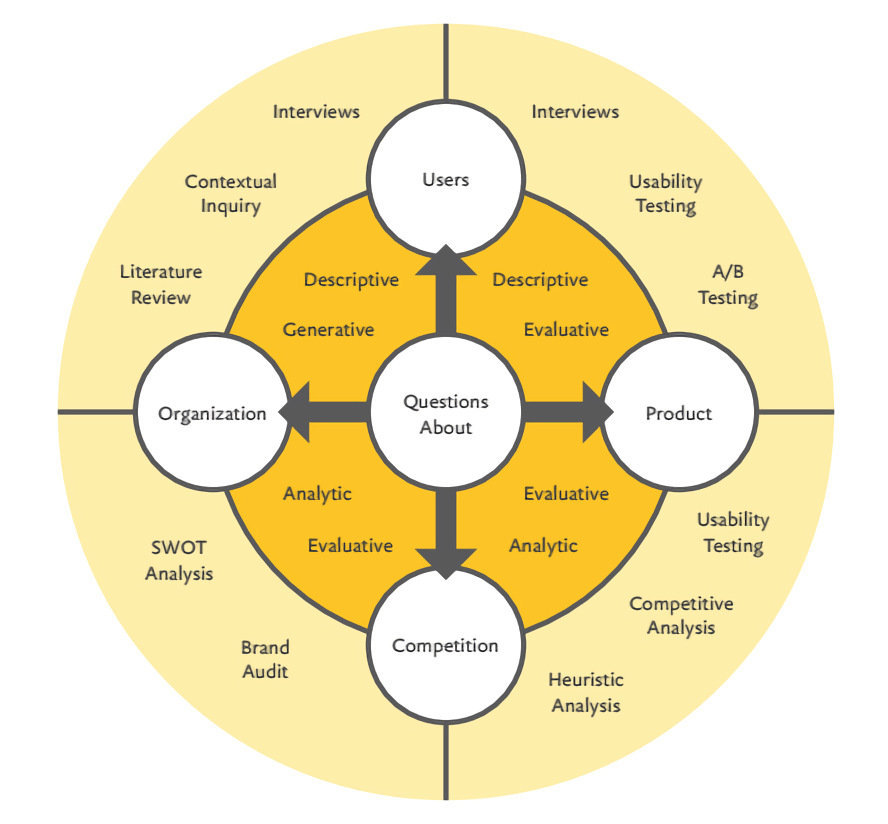Overview
What type of methods and approach you need will depend on your research questions. You can use the below diagram to guide your choice of research activities.
Choosing research methods
 Source: Just Enough Research
Source: Just Enough Research
How much user research do you need?
The below matrix can help you decide how much time do you want to spend on user research. There are two things you should take into consideration - problem clarity and risk.
Problem clarity - how well do you understand users’ needs, frustrations and context in which they would use your product or service?
Risk - what would happen if you made a wrong decision? Would it involve reengineering or redesign of the product? Are there any legal risks?
 Source: ProductCraft
Source: ProductCraft
Research Light (Problem Clarity = Low, Risk = Low)
The risks in this quadrant are lower so you could start exploring different solutions creating low-fidelity wireframes earlier. Testing them will allow you to get more clarify about the users and how they expect to use your product.
Ship it and Measure (Problem Clarity = High, Risk = Low)
For some products you could start development with minimal research. If your problem is clearly understood and the risks are low, you can start working on your product immediately - creating requirement specification documents or high-fidelity wireframes.
Research Heavy (Problem Clarity = Low, Risk = High)
This is the most challenging quadrant. You don’t want to start creating solutions before you have a clear understanding of the users and their needs. This could result in solving the wrong problem or in creating a product that is not useful to the users. Spending more time on research will save you time and money in the long run.
Design Heavy (Problem Clarity = High, Risk = High)
If you have a clear understanding of your users and their needs you can start creating rapid prototypes and evaluating your ideas. However, research in this quadrant can be useful as well - it can inspire your team to create better solutions and to think about other ways to solve user problems.